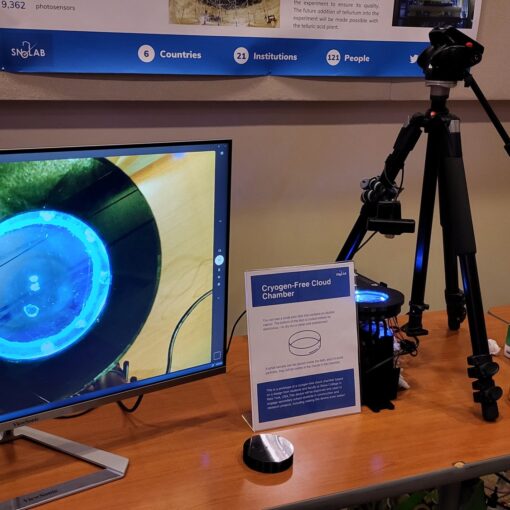Author’s Update (12/19/13): I re-wrote the paragraph on GMO foods, their availability, and health benefits based on a reader comment to make the paragraph more accurate to the possible benefits vs. the actual availability of such foods in the market.
NPR’s Weekend Edition Sunday ran a story this morning about a new breed of children’s books whose central actors are princesses working proactively as the hero [1]. This is a wonderful thing. In contrast to many popular children’s books, especially “classic” fairytales that haven’t been updated for modern societal norms, princesses here are not the victims but the ones who work proactively to solve problems. This is a positive step toward improving pop culture role models for young girls. It is unfortunate that at least one of these books parrots food pseudoscience. This is most troubling because they are supposed to be written to be compliant with the new State-level “Common Core” education standards.
The Book In Question
The author of the book series, entitled “The Guardian Princess Alliance,” is a Southern California mom and Professor of Media and Cultural Studies named Setsu Shigematsu. As NPR puts it,
Creator Setsu Shigematsu recasts princesses as environmentally conscious and not waiting around to be rescued. [1]
However, what we learn from the NPR story is that there is more at work here than just “environmental consciousness” – there is also a streak of left-wing pseudoscience written into at least one of the stories,
“Once upon a time, there was a princess named Vinnea,” begins the first book, Princess Vinea [sic] and the Gulavores. Vinnea, a member of a collective of diverse heroines more active than their traditional counterparts, is of African descent and is the guardian of plant life.
She protects the kingdom from unwholesome food grown by magic instead of nature. [1]
We can already see where this is headed – Princess Vinnea is fighting against a group of people who modify food-producing plants in some way (in our modern world, this would be genetic modification or maybe using pesticides during production; after harvest, when making food items, this might mean mixing food with additives or preservatives). What is frustrating about this is that
Shigematsu says they’re also written to align with Common Core, the educational standards adopted by 45 states . . . Gay Kolodzik, owner of the Frugal Frigate Children’s Bookstore in Redlands, Calif., says for those in the world of children’s literature, a Common Core designation is a pretty big deal. ‘When I read all the publisher’s magazines that I read every day, if they say, ‘Meets Common Core,’ instantly I go right to it and look through it and see if it’s something that suits the store and suits the people that shop here,’ Kolokzik says. ‘It gets my attention quickly.’ [1]
In other words, because these books are labeled as compliant with Common Core, they are more likely to be stocked by at least some bookstores. What we are learning here is that “compliant” does not mean “scientifically accurate,” which is something to be worried about. That is despite the fact that Common Core itself tends to be heavily well-aligned with academic, scientific standards when it comes to its scientific component.
GMO and Food Additive Pseudoscience vs. Reality
Let us pause here and remind ourselves how it is that we know that anti-GMO (genetically modified food) efforts are pseudoscientific. First, there is no reliable scientific evidence that GMO food has any negative health effects on humans. In fact, in this realm the scientific method has worked extremely well; a famous paper suggesting a negative health link (GMO corn and cancer) was recently retracted by the publishing journal due to extreme weaknesses in the methods used by the authors [2].
The retracted paper was one of the only such papers used by anti-GMO proponents to support their case, and it was determined by the scientific review process (including review by the community after publication) that this paper provided a weak methodology and therefore drew improper conclusions. Of course, it’s incumbent for an independent group to try to duplicate the study and determine if they get more reliable outcomes, or for the authors to address the weaknesses in their method and try again. That’s just good science; but it is clear that policy should not be made on the basis of single, bad papers like this.
But the bottom line is that anyone who tows the claim that “GMO food is bad for humans” (food grown with “magic” instead of “naturally”) is towing grade-A pseudoscience of the worst kind. There is no scientific evidence for this claim, and so it remains in the realm of a political or values belief, and not science.
The potential health benefits of genetically modified food are incredible. Some foods, engineered with targeted gene manipulation, have been available in the market for a while – for instance, some tomatoes, soybeans, corn, canola, and cotton seed oil. Some foods not yet on the market hold the promise of transforming the nutrient profiles of regions where they could be grown. For instance, Golden Rice provides vitamin supplementation to people whose diet is already based on rice, and would otherwise normally suffer a vitamin A deficiency from eating a largely rice-based diet. GMO foods already on the market are have various advantages, such as more pest resistance or increased yield. The human population is not shrinking and it’s facing ever-changing climate conditions; sustainable farming is critical to our food security, but so is the fitness of every crop that is planted in a sustainable way. As a scientist, I want to maximize efficiency of land and water use while meeting the food and health demands of hungry people everywhere; part of that is genetic modification, which has been making food better for humans since the invention of agriculture by our species about 10,000 years ago.
What about additives? Maybe Princess Vinnea is fighting against food additives? Well, again, this is left-wing pseudoscience. Yes, it’s true that there have been food additives found to be unhealthy in specific dose levels in humans. But those that pose the most meaningful threat are banned already, and research always continues to assess those that haven’t been shown to pose a threat (and thus remain in foods because they have no demonstrated adverse effects). The worst forms of food additive pseudoscience are parents who practice things like the vastly discredited “Feingold Diet,” and fight the use of food coloring (based on the mistaken belief that additives cause hyperactivity in children).
Either way you parse the quoted lines in this book, Vinnea appears to be parroting the worse pseudoscience. Let’s have a look.
The Princesses of Pseudoscience
A quote from the Guardian Princesses book suggests the pseudoscientific bend of the story:
The Guardian Princesses face no evil stepmothers or dangerous spinning wheels. Instead, Vinnea leads a life of social activism against unnaturally modified foods. “These fruits and vegetables are not natural,” Vinnea accuses a villainous gulavore in the book. “They contain a dangerous chemical, admit it … Dolo, you’ve ruined our garden in order to feed the people this unhealthy food.”
Why is it so bad to tell a story like this? Well, there are a few factors that I, as a scientist, am concerned about
- It is already true that many parents raising children raise them, either intentionally or accidentally, to be scientifically ignorant. They tell their kids that the Sun goes around the Earth, either because it’s easier to say that or because they honestly don’t know. They expose them to religious schooling that indoctrinates scientifically wrong beliefs about the age of the Earth or the relationship of humans to their environment. They feed their kids a diet that is based on the scientifically inaccurate beliefs of the parents, thus indoctrinating kids into scientifically incorrect health thinking.
- It’s particularly an issue that gender parity has not been achieved in the sciences. It’s crucially important for young girls to have strong role models, both in personality and in their demonstration of knowledge of the world. Inaccurate knowledge, transmitted through proactive role models, carries a danger with it that risks polluting the quest for gender parity in the sciences.
I know that these are slippery slope arguments, so don’t bother pointing it out. I leave it to the next 50 years to run the experiment and determine what effects, if any, teaching more scientifically inaccurate information to children has on the U.S. scientific, technological, and economic outcomes. Given past experience, there is no reason to believe this is harmless. At best, it’s lying to children . . . which I will never condone in my own life (looking at you, Santa).
Final thought
As a scientist, I can only beg this: don’t label a book as compliant with “Common Core” when it parrots some of the worst pseudoscience running around like a disease in our society.
[1] “New Princesses Rescue Girls From A Distressed Damselhood”. MATT GUILHEM. Weekend Edition Sunday. Dec. 15, 2013. http://www.npr.org/2013/12/15/251157298/once-upon-a-time-the-princess-saved-the-environment
[2] “Controversial GMO Corn Study Being Retracted Over Authors’ Objections”. Steven Salzburg (Contributor). Forbes. Dec. 8, 2013. http://www.forbes.com/sites/stevensalzberg/2013/12/08/controversial-gmo-corn-study-being-retracted-over-authors-objections/





2 thoughts on “The Princesses of Pseudoscience”
A fine commentary, but the one paragraph in which you tout the advantages of GMO foods is a little overboard. First, golden rice, for all its advantages, is simply not yet available because it has not ever been approved as a safe food – it’s nonsense that its regulation has been so overwhelmingly cautious, but it has been, and nobody has derived any benefit from it so far. Second, saying that “GMO corn and wheat are …” implies, falsely, that there is some GMO wheat in use. It has never gone beyond experimental.
Thanks for the comment, Charles! I updated that paragraph based on your feedback. It changes nothing about the main point of the post, which is that there are science issues and, separately, values issues involved in GMO foods. Children’s books like this one discussed on NPR confuse the values and science arguments, yet somehow are consistent with Common Core education standards even though they get the science issues wrong (e.g. there are no known threats from precision genetically engineered foods).